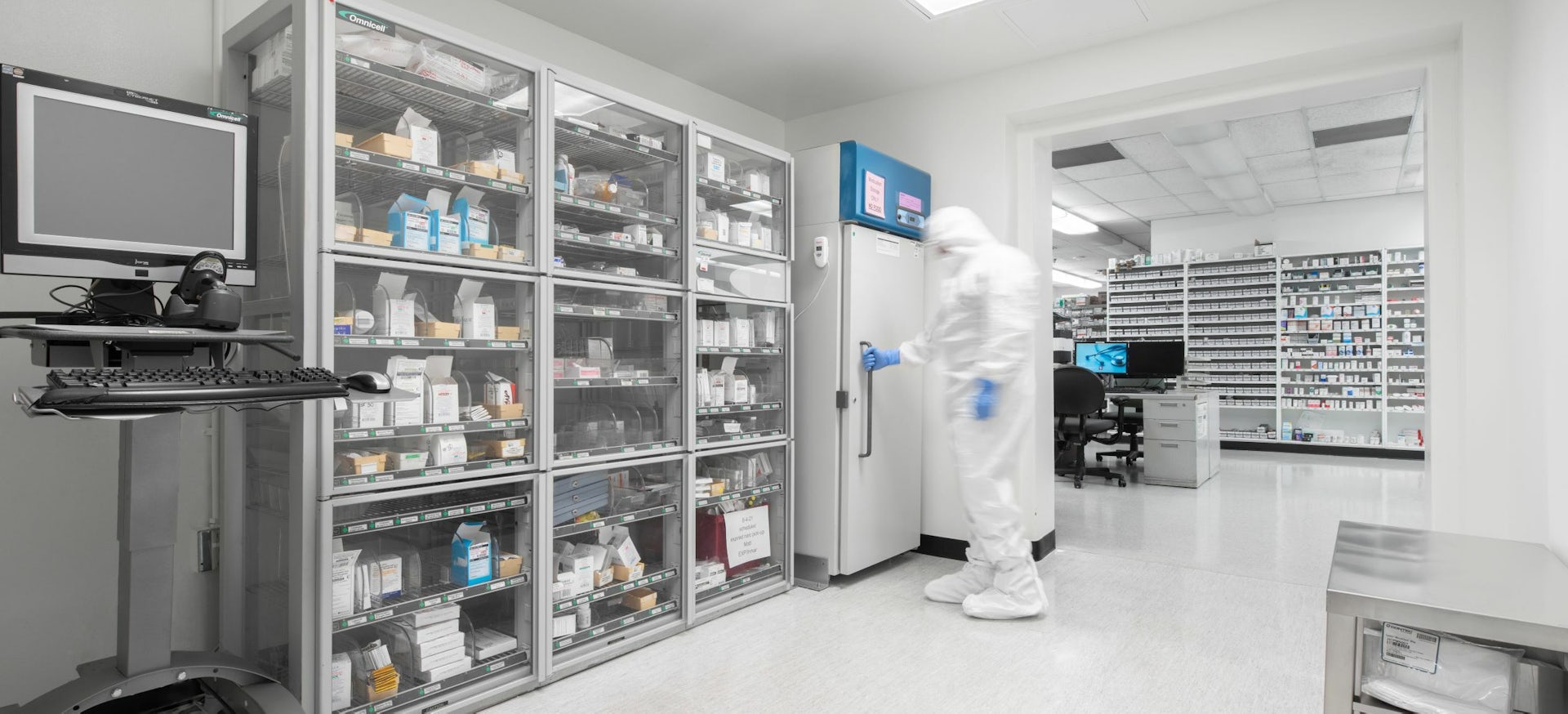Pharmacy upgrades are complicated, expensive and vital to the operations of a hospital. Lessons learned from past projects can help ease the process.
By Greg Schneekluth and Marcus Thorne
Hospital pharmacy upgrade projects are among the most challenging and complicated for healthcare providers, due to extensive regulations, infrastructure limitations and inevitable hiccups. On past projects, we have encountered everything from modified code requirements that changed mid-project to mechanical, electrical and plumbing (MEP) systems that unexpectedly needed to be replaced.
Upgrading a pharmacy to achieve USP 797-800 compliance requires a commitment to flexibility, while maintaining the highest level of quality. The safety of the hospital staff and patients is at stake, and there is no room for error. The approach to pharmacy design must be focused on effectively dealing with a variety of different issues that can arise during the process.
Here are five ways to get it right:
Give Regulators an Early Heads-Up
It’s not enough to be able to reel off the names of the agencies that regulate pharmacy upgrades in your state. You also must understand their specific strategies for approving these projects to anticipate and head-off conflicts. Are regulators stretched due to short staffing? Do they have new management that are now enforcing a stricter approach on key items?
Your team should include veterans of the project approval process who can tell you what they’ve observed. In California, for example, pharmacies must be permitted by the Office of Statewide Health Planning and Development (OSHPD), soon to be renamed the Department of Health Care Access and Information (HCAI), which oversees healthcare construction. They must also be licensed by the California Department of Public Health (CDPH) and the state’s Board of Pharmacy.
To help the client fully understand the implications of the code requirements, it is essential to prepare a code compliance log that is updated at each design phase. This type of documentation is useful especially if regulations are anticipated to be updated or modified while a project is in process. Another way of avoiding problems is to prepare room data sheets (one sheet per room) that capture all of the design requirements for each space being remodeled. Once completed, the room data “book” can also be utilized as a valuable reference document to help explain everything about the project, such as existing conditions, interim phasing requirements and other facility coordination requirements.
Many design firms may not bother with this level of detail. We have found that including the room data sheets in our OSHPD preliminary reviews helps to give them a more comprehensive understanding of how the project has been assembled and the extent of the phased work that will be happening a year or so down the line.
Examine the Existing Infrastructure and Make Tough Calls
For any pharmacy upgrade, it is vital to be pragmatic and realistic about whether the existing MEP systems can be retained. This is especially true in older hospitals where old record drawings may not reflect the current conditions.
To address this situation, we believe the best strategy is to begin with an extensive facility condition assessment, and feasibility study. Don’t be surprised if this process takes 5-8 weeks, but it will be time well spent. The goal is to detect and address any unforeseen conditions that have the potential to detrimentally impact the project’s budget.
It’s common to find systems that are old or have been repaired or replaced incorrectly. Be prepared to make tough calls about systems that are past their useful lives and must be removed and replaced. Then you can plan the necessary modifications right away instead of needing to re-engineer everything after you discover a problem.
Consider Alternatives to Temporary Pharmacies
In many upgrades, hospitals build temporary pharmacies that may be in place for six months to a year. As hospital administrators are well aware, this can be a complicated, staff taxing and expensive process; the rules are the same for temporary and permanent pharmacies. But alternatives may allow you to keep the existing pharmacy staff and equipment in place until the new facility is ready for move-in. One key consideration is to identify which departments do not need to be located in the hospital, where space is at a premium. Can they be relocated to an off-site location instead?
For example, if you could move administration elsewhere, such as to an office building on campus or down the street, it will allow you to recapture that space for the permanent pharmacy. Administration areas are much cheaper to move. You could even move them to a trailer outside until a permanent home is found. These strategies can reduce the length of the project and be less disruptive for pharmacy staff.
...














